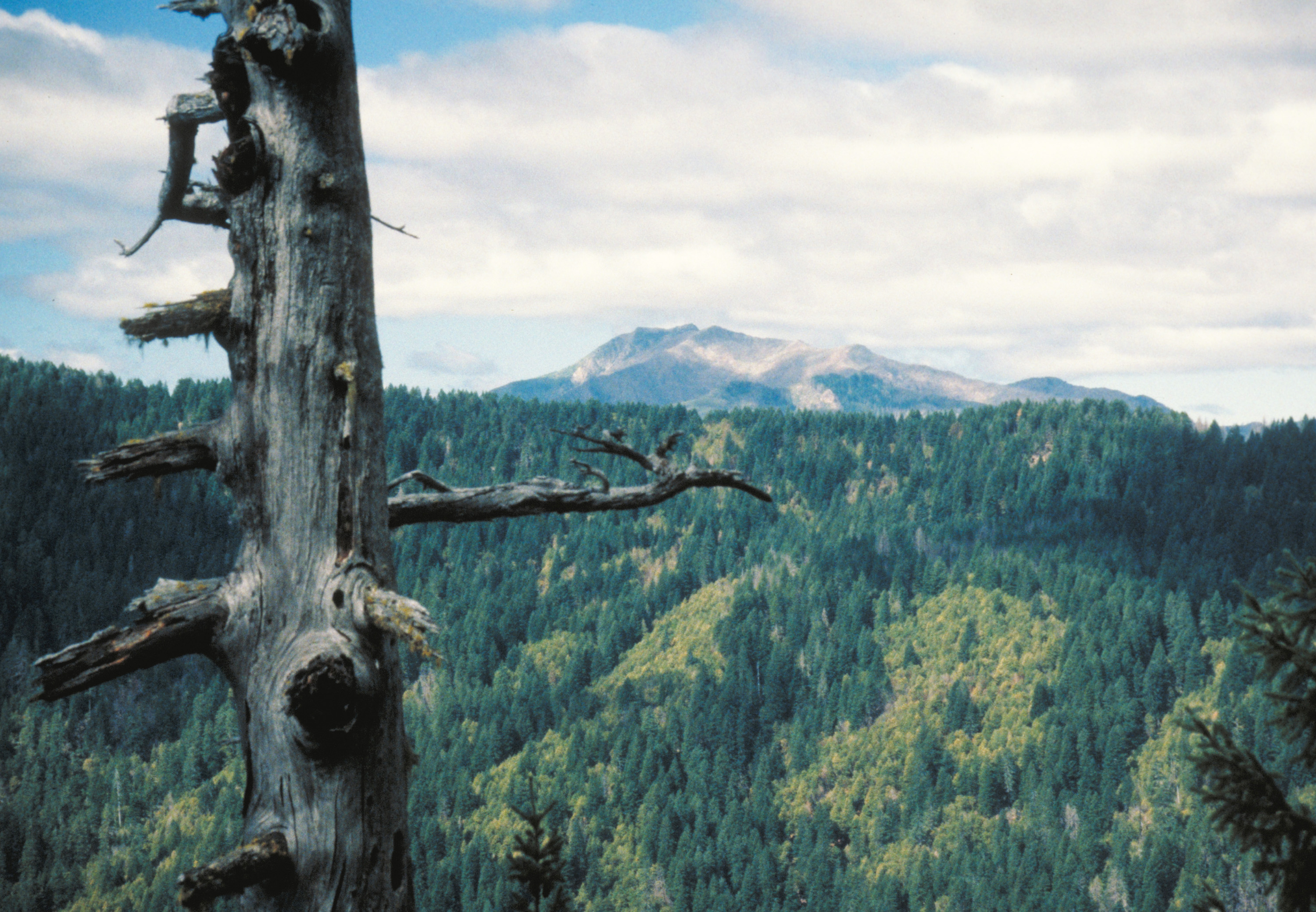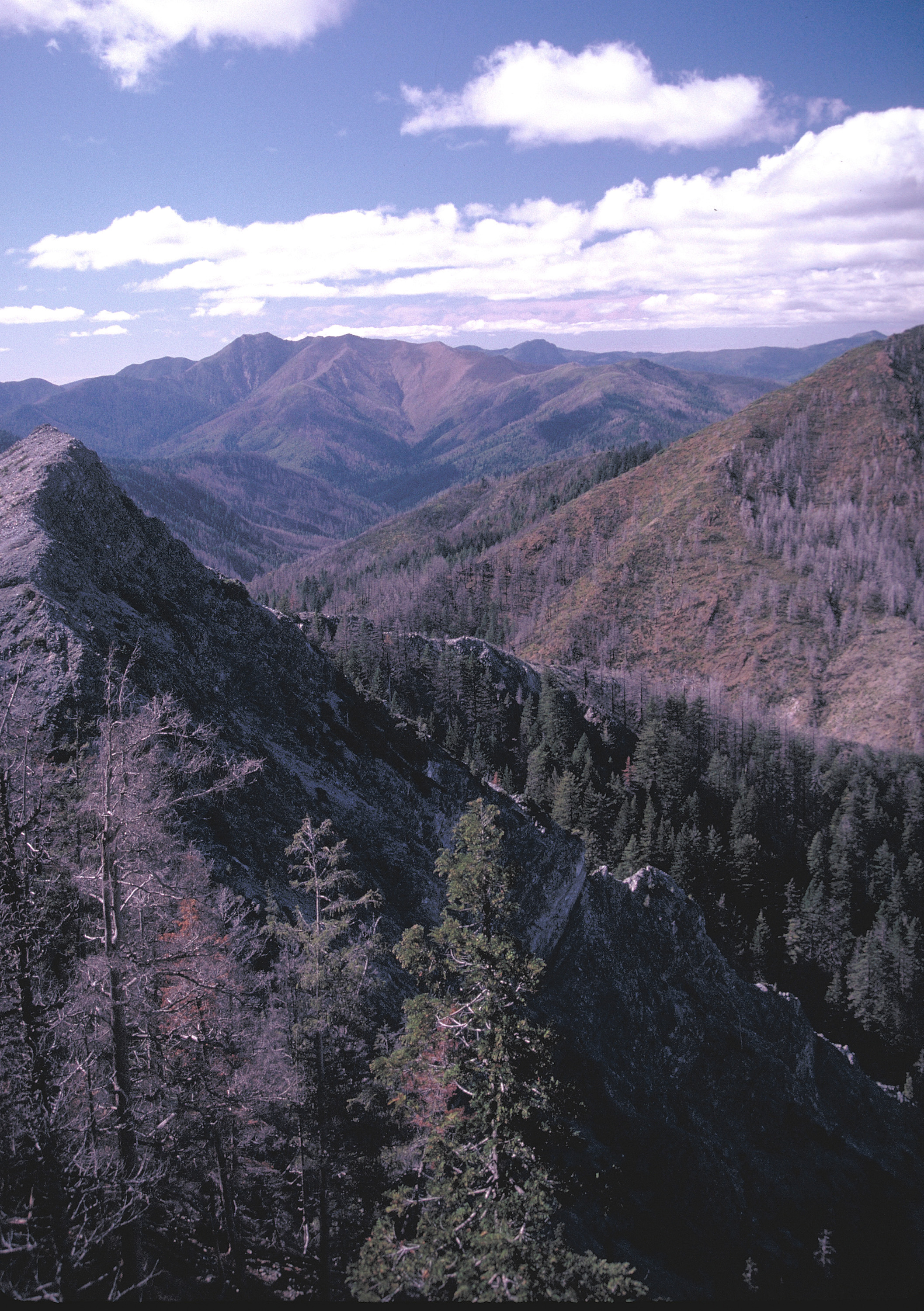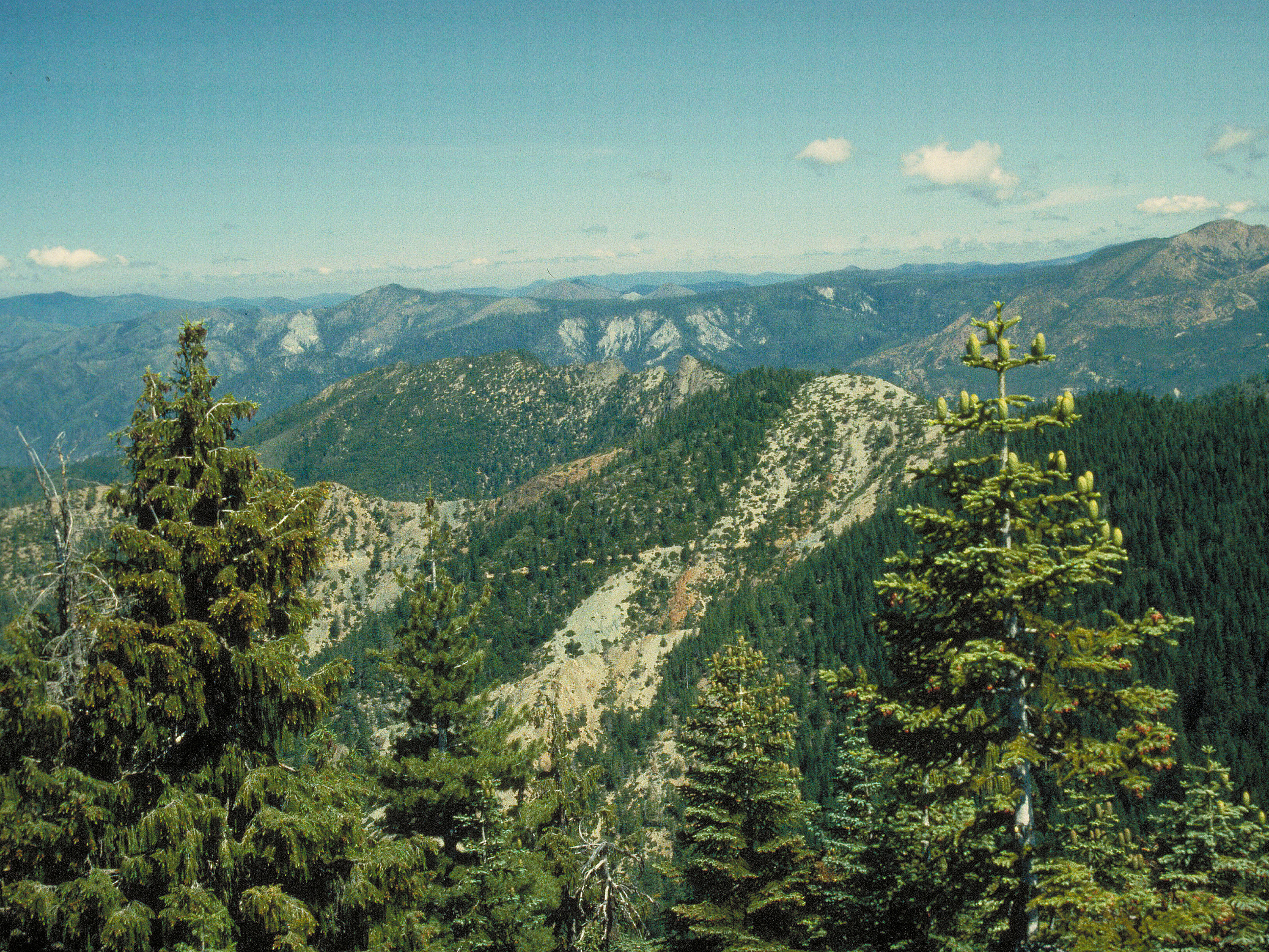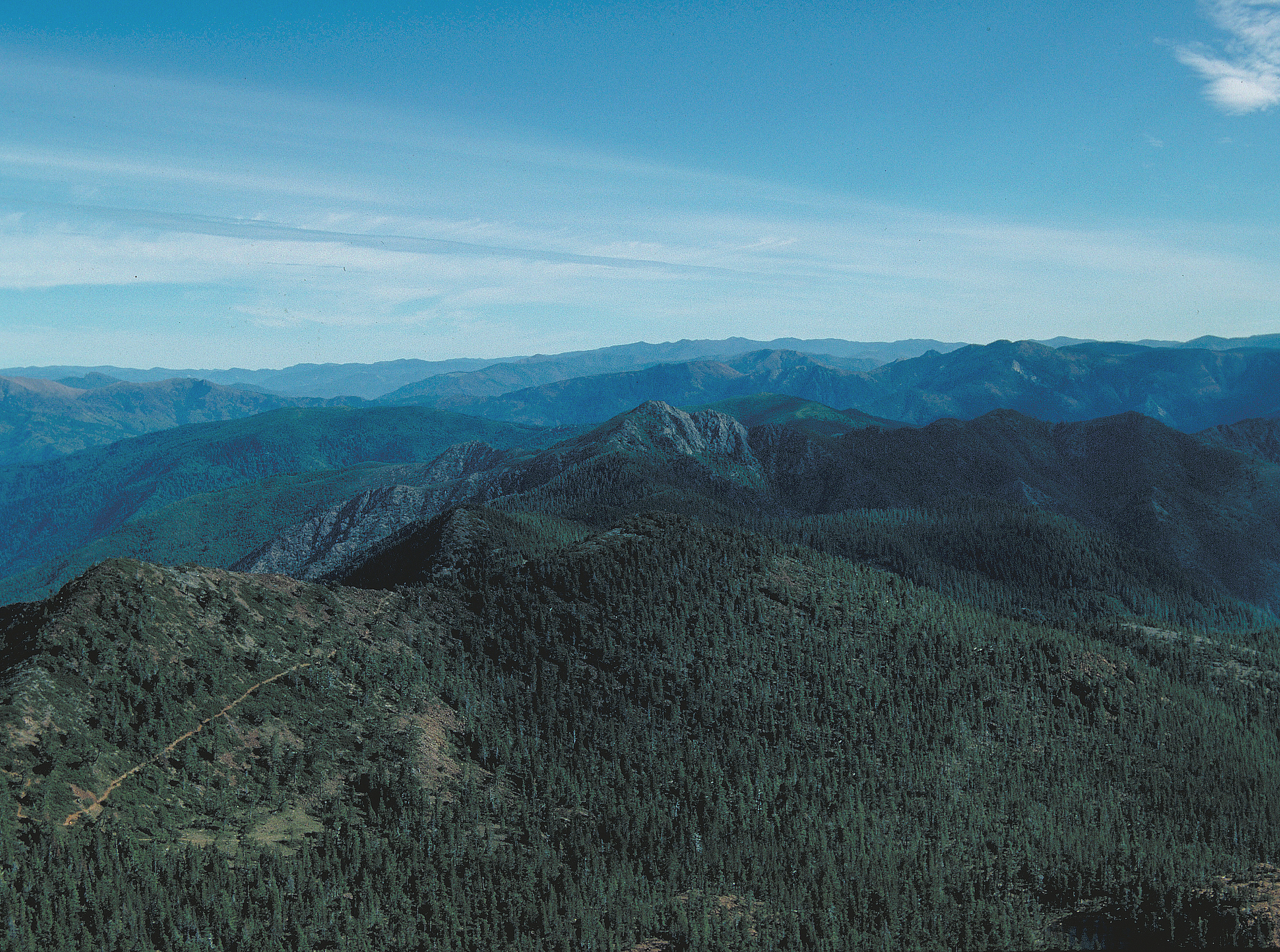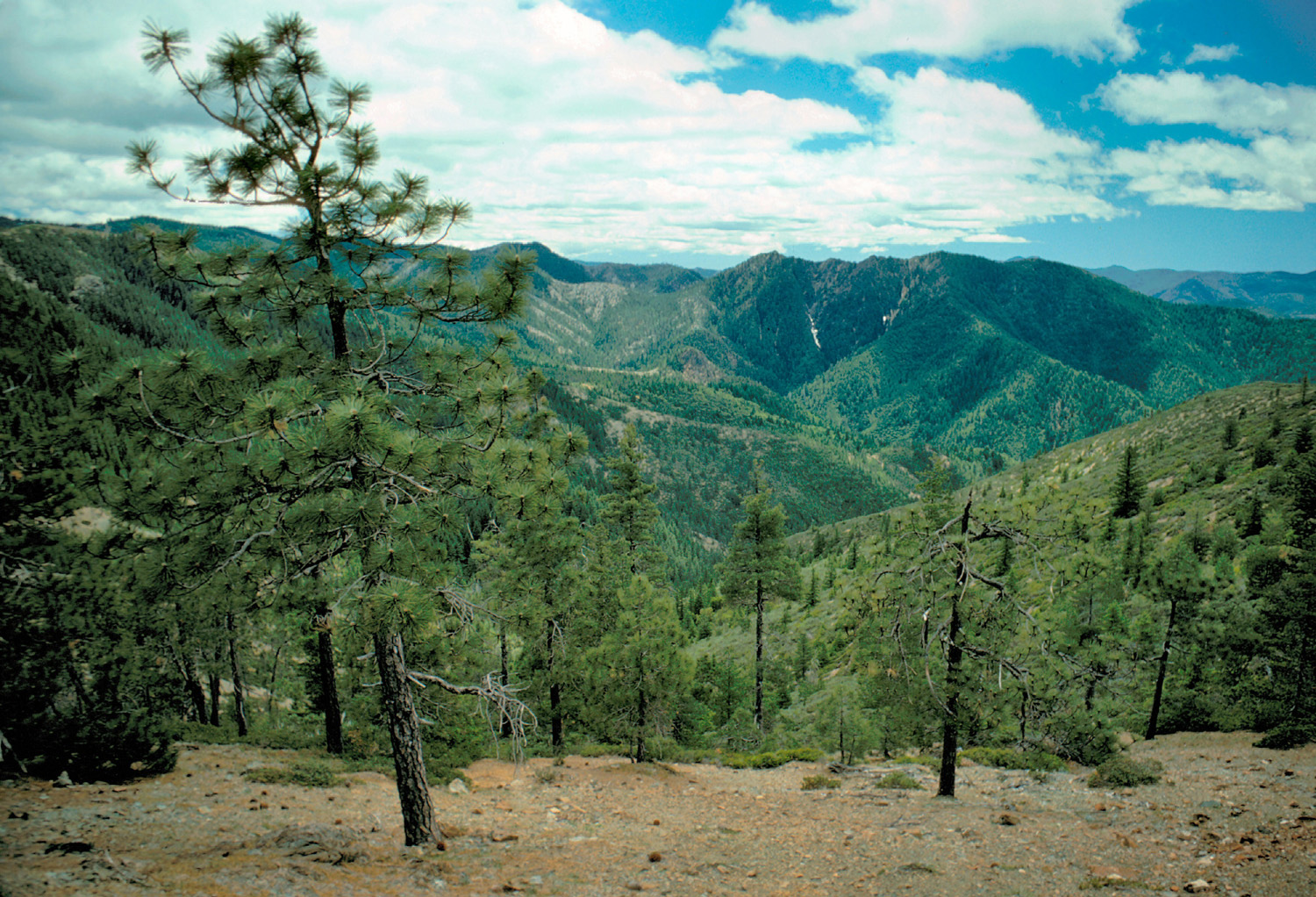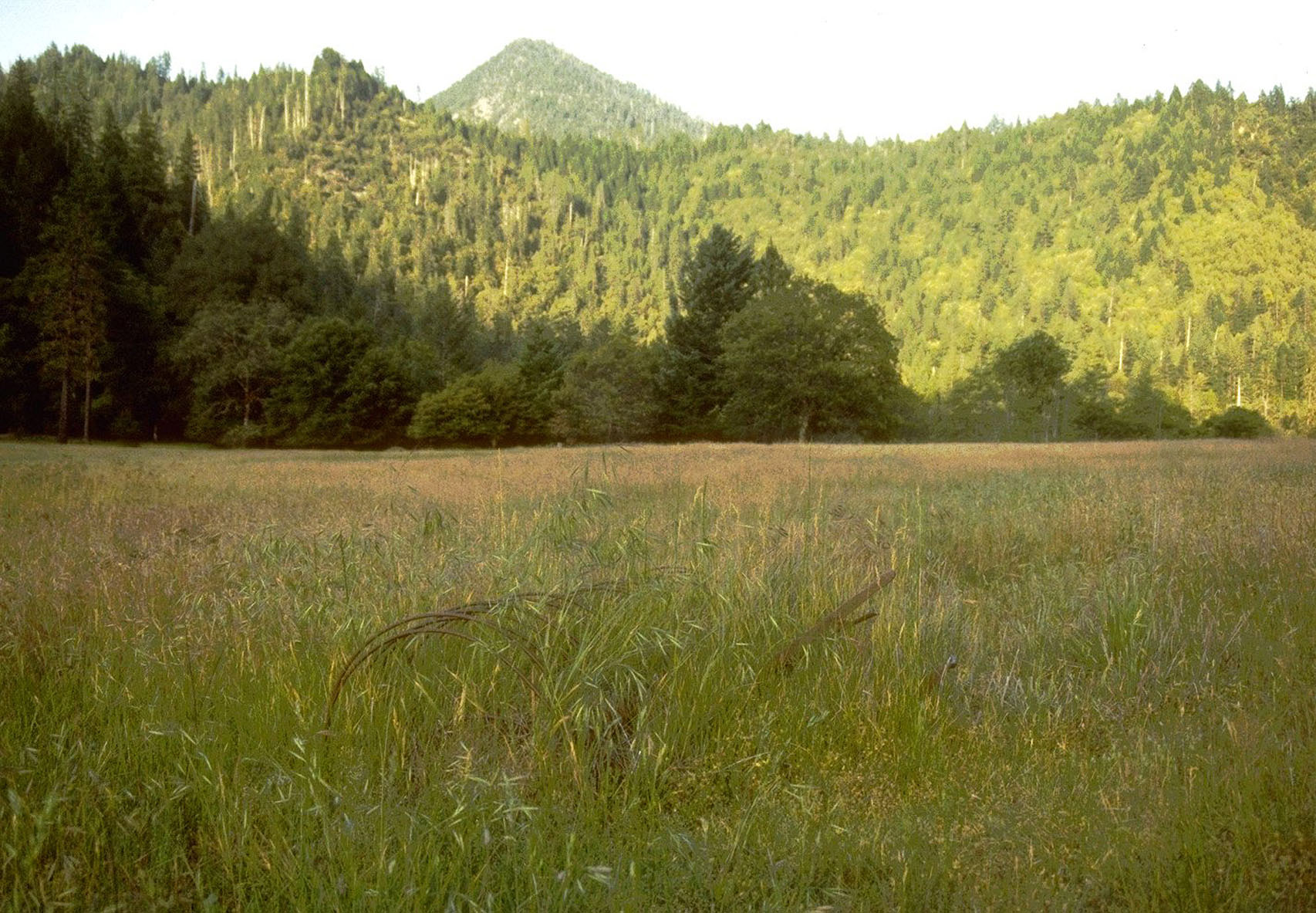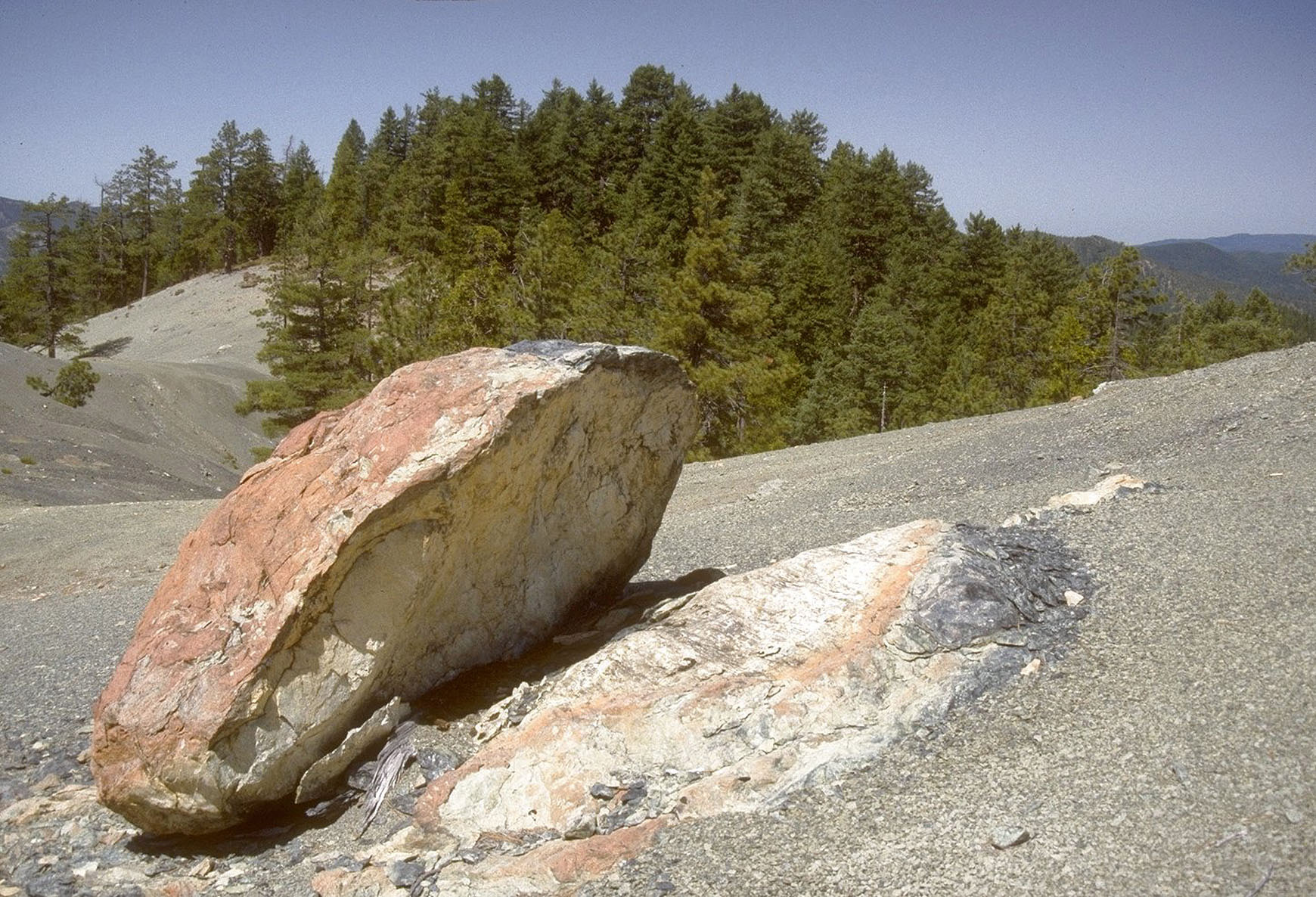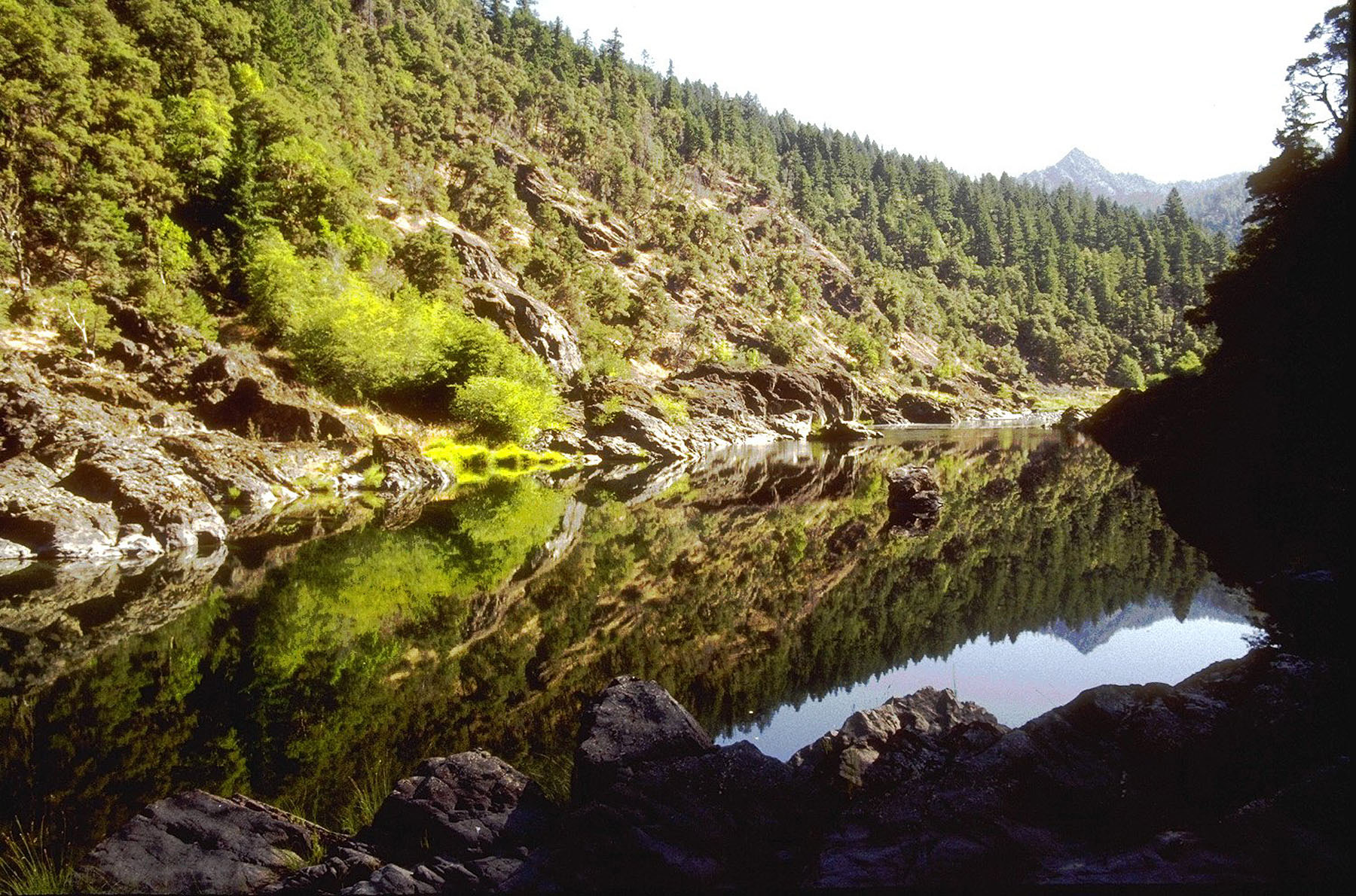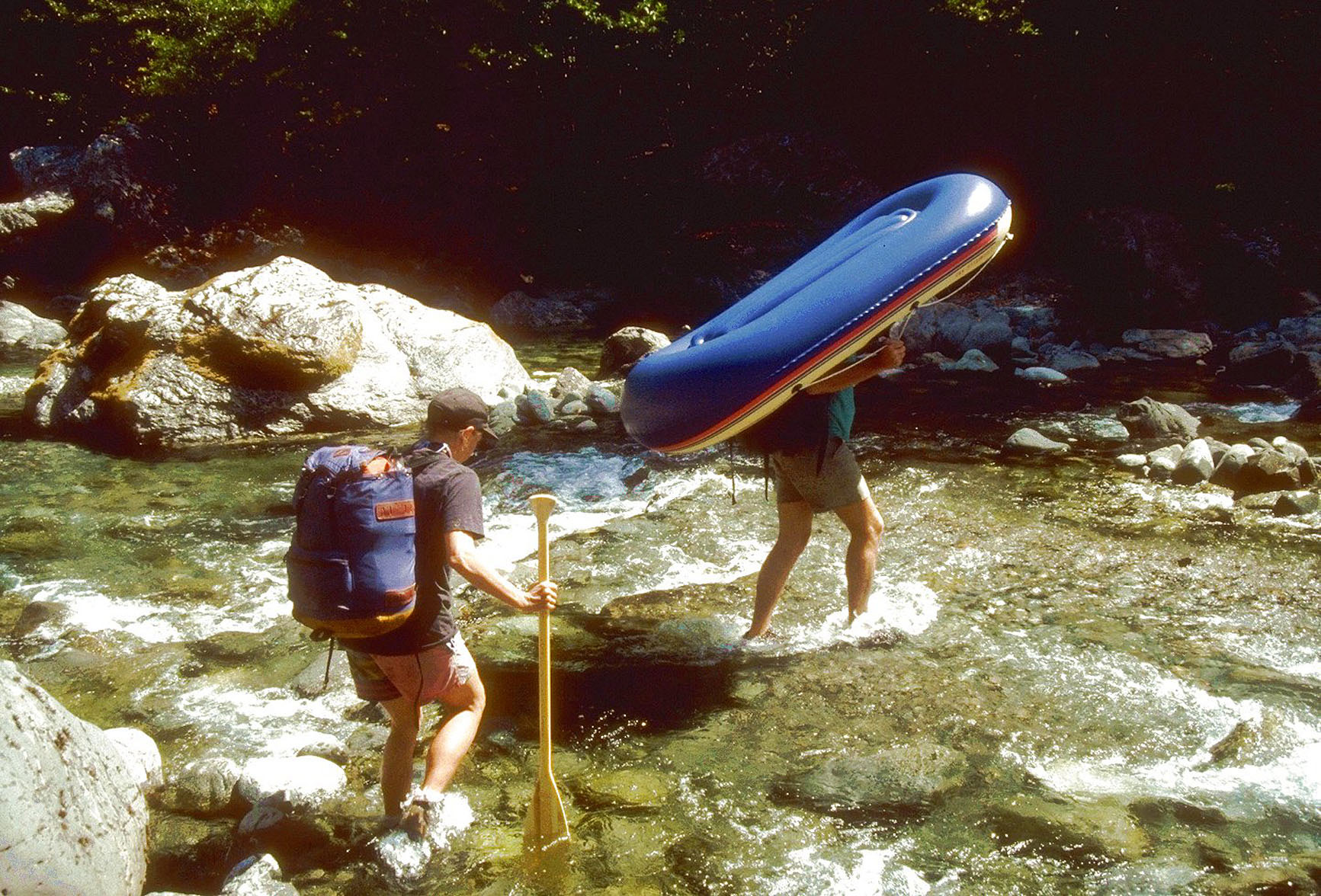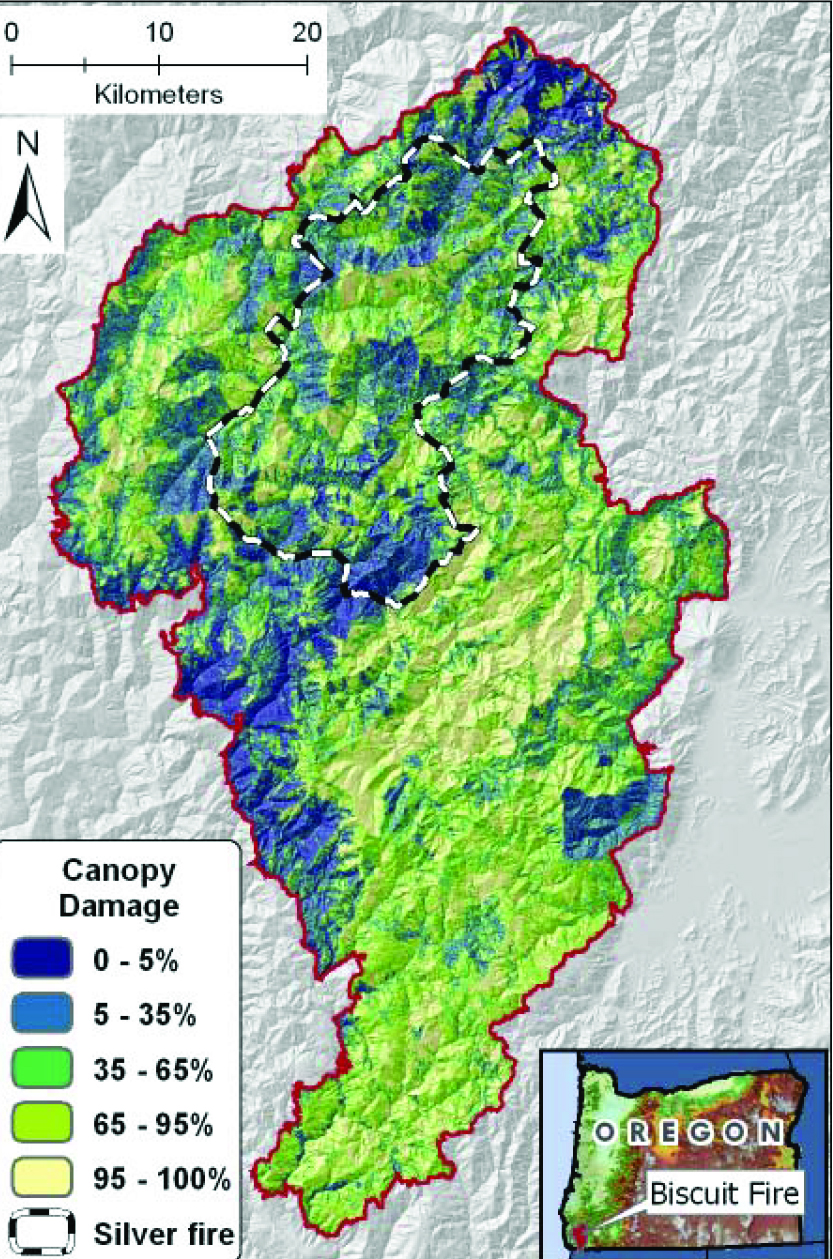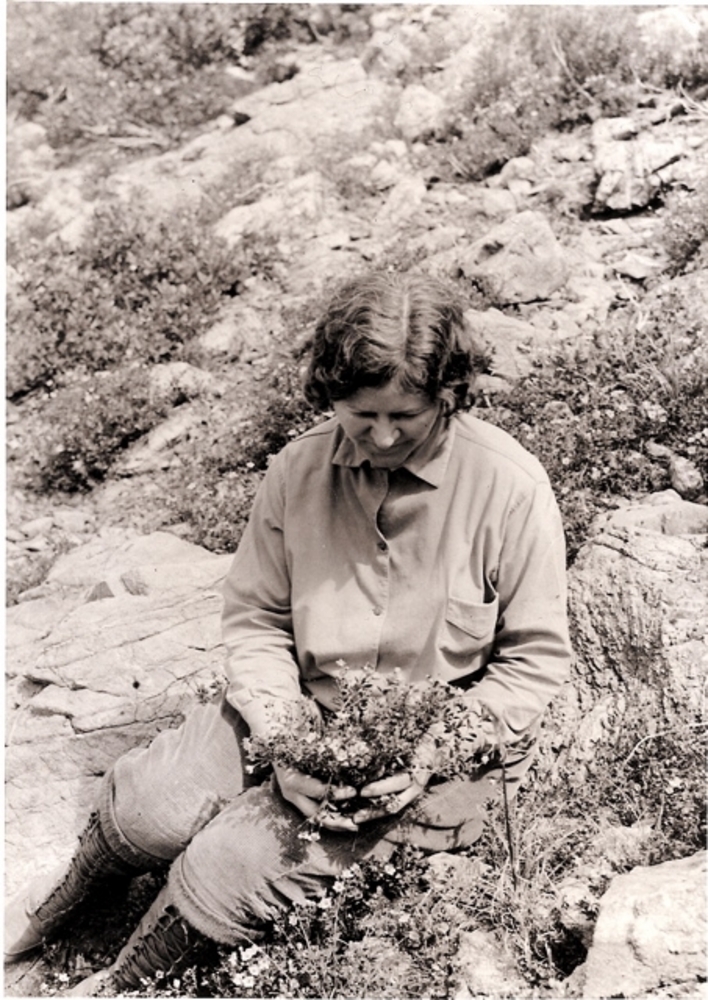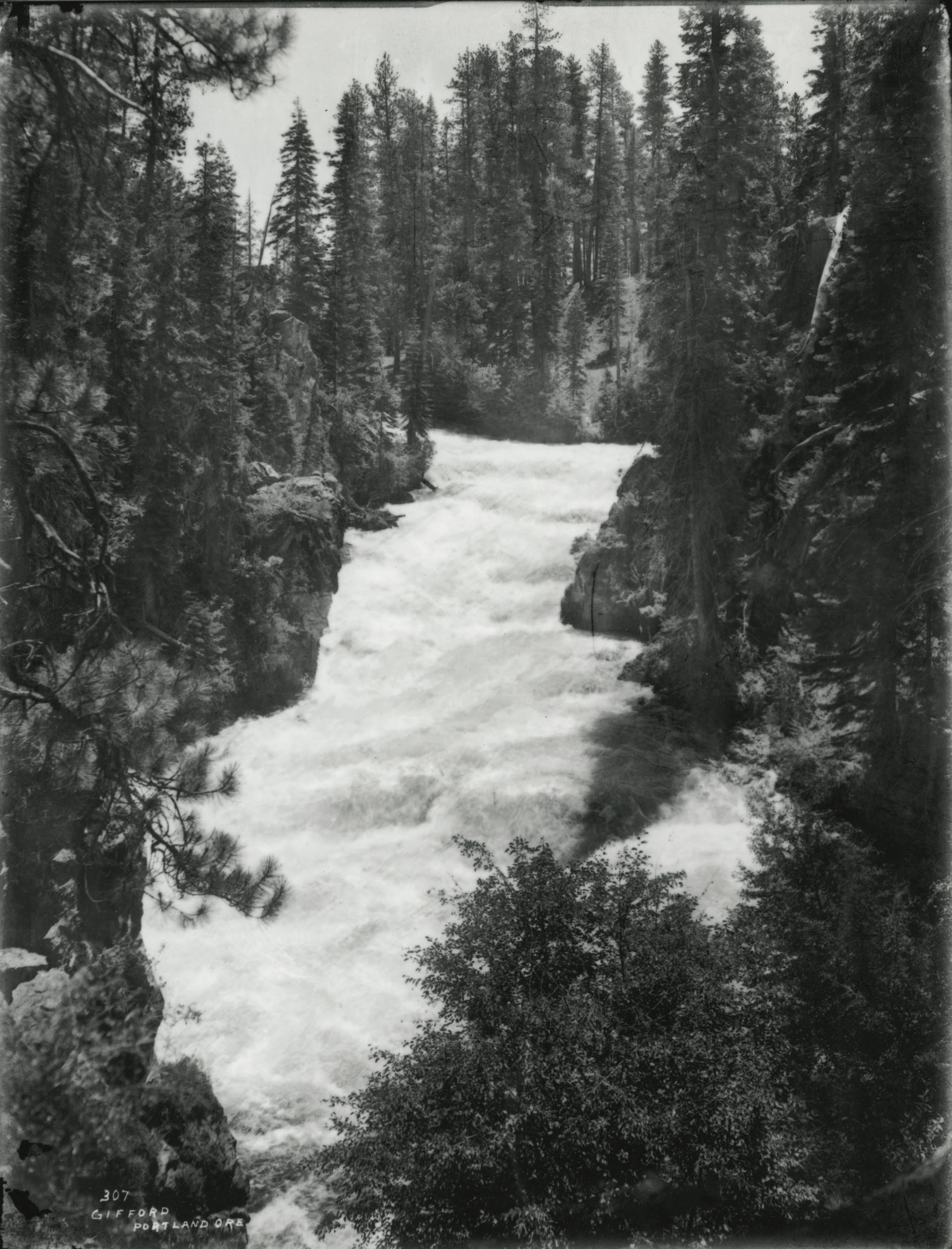The 179,850-acre Kalmiopsis Wilderness, located in southwestern Oregon in the rugged Siskiyou subrange of the Klamath Mountains, is the third largest wilderness in the state. A portion of the current Kalmiopsis was originally protected by the U.S. Forest Service in the 1940s and subsequently was included in areas protected by the Wilderness Act of 1964.
Ranging in elevation from stream canyons barely 500 feet above sea level to its highest point—Pearsoll Peak, at 5,098 feet—Kalmiopsis is named for one of the unique plant species endemic to the area, the ancient heath plant Kalmiopsis leachiana. The delicate shrub produces five-petaled flowers that vary from pink to rose in hue and bloom through the transition from spring to summer.
Gold drew miners to the rivers and streams coursing out of these hills during the nineteenth century, and some small claims continue to be worked. The ultramafic soils in the eastern half of the Kalmiopsis region contain heavy metals such as chromium, magnesium, and nickel and are toxic to many plant species. These valuable ores were mined extensively during the middle decades of the twentieth century, prior to the designation of the area as wilderness. Some of the trails that now thread through the area overlay the beds of old mining roads, particularly in the Emily Cabin area. The rugged and remote Kalmiopsis offers visitors outstanding opportunities to experience solitude, but some areas fall shy of being pristine because of the region's history of resource extraction.
The Kalmiopsis Wilderness contains a singular level of rare endemic plants that only grow in niche environments. Some of this botanical variety can be traced to particular soil types. Many plants and shrubs in the area were named by botanist T.J. Howell, including Howell's mariposa lily, Howell's saxifrage, and Howell's manzanita. The Brewer spruce, identifiable by its distinctive drooping limbs, is a native to the Klamath Mountains in the Kalmiopsis. Fen and seep habitats feature a native variation on the fly-catching pitcher plant: Darlingtonia californica. The upper reaches of the Rough and Ready Creek Watershed—outside of the Kalmiopsis Wilderness but adjacent to its southeastern boundary—contain the greatest number of endemic species found anywhere in the state.
The Kalmiopsis and surrounding Klamath Mountains support the broadest array of vertebrate species in Oregon. Black bear, elk, coyote, gray fox, cougar, black-tailed deer, and smaller mammals and rodents are relatively abundant throughout the region. The Siskiyou chipmunk makes its home in the area and nowhere else. Other species in the wilderness include the spotted owl, quail, grouse, pileated woodpecker, rattlesnake, and scarlet kingsnake.
Three Wild and Scenic rivers flow from or through the Kalmiopsis Wilderness: the North Fork of the Smith River; the Chetco River, in the southern range of the wilderness; and, bisecting the north lobe of the area, the fabled whitewater stretch of the Illinois River Canyon. These clear, swift streams represent some of the least disturbed salmon habitat in Oregon.
Another distinctive feature of the Kalmiopsis Wilderness are two small glacial cirque lakes that are a remnant of the ice age. The most accessible of these is Babyfoot Lake, a short hike from a trailhead on the eastern boundary of the wilderness. Another, Vulcan Lake, is a short trek from the western, coastward boundary of the wilderness.
The half-million acre Biscuit Fire in the summer of 2002 swept though the Kalmiopsis Wilderness and surrounding Rogue River-Siskiyou National Forest, burning vast stretches of its old-growth forests and charring some of the better known areas in the wilderness, including the slopes surrounding Babyfoot Lake. The changes this fire wrought on large expanses of unlogged forests have attracted the attention of ecologists and botanists eager to determine the impact of fire on the plant life and to evaluate whether these plants and animals would prosper or suffer while the ecosystem regenerated.
-
![Kalmiopsis Wilderness.]()
Kalmiopsis, vista 4.
Kalmiopsis Wilderness. Photo Steve Boutcher, courtesy Wilderness.net, 3153
-
![Kalmiopsis Wilderness.]()
IKalmiopsis, vista 1.
Kalmiopsis Wilderness. Photo Steve Boutcher, courtesy Wilderness.net, 3156
-
![Kalmiopsis Wilderness.]()
Kalmiopsis, vista 2.
Kalmiopsis Wilderness. Photo Steve Boutcher, courtesy Wilderness.net, 3155
-
![Kalmiopsis Wilderness.]()
Kalmiopsis, vista 3.
Kalmiopsis Wilderness. Photo Steve Boutcher, courtesy Wilderness.net, 3154
-
![Kalmiopsis Wilderness.]()
Kalmiopsis, vista 6.
Kalmiopsis Wilderness. Photo Lee Webb, courtesy Wilderness.net, 2626
-
![Old Homestead Meadow, Kalmiopsis Wilderness.]()
Kalmiopsis, Old Homestead Meadow.
Old Homestead Meadow, Kalmiopsis Wilderness. Photo Rene Casteran, courtesy Wilderness.net, 317
-
![Outcrop of serpentine rock, Emily Cabin Trail, Kalmiopsis Wilderness.]()
Kalmiopsis, serpentine outcrop.
Outcrop of serpentine rock, Emily Cabin Trail, Kalmiopsis Wilderness. Photo Rene Casteran, courtesy Wilderness.net, 315
-
![Illinois River.]()
Kalmiopsis, Illinois River.
Illinois River. Photo Rene Casteran, courtesy Wilderness.net, 318
-
![Rafting on the Chetco River.]()
Kalmiopsis, Chetco R, rafters.
Rafting on the Chetco River. Photo Rene Casteran, courtesy Wilderness.net, 316
-
![Chetco River between Carter and Babyfoot creeks.]()
Kalmiopsis, Chetco canyon.
Chetco River between Carter and Babyfoot creeks. Photo Rene Casteran, courtesy Wilderness.net, 320
-
![Kalmiopsis leachiana.]()
Kalmiopsis leachiana.
Kalmiopsis leachiana. Courtesy Leach Botanical Garden
Related Entries
-
![Biscuit Fire of 2002]()
Biscuit Fire of 2002
On July 13, 2002, a series of electrical storms passed over southwester…
-
Lilla Leach (1886-1980)
Lilla Irvin Leach was an independent field botanist who, with her husba…
-
![National Wild and Scenic Rivers in Oregon]()
National Wild and Scenic Rivers in Oregon
The world's first and most extensive system of protected rivers began w…
-
![Thomas Howell (1842-1912)]()
Thomas Howell (1842-1912)
The life of Oregon's Thomas Jefferson Howell is surely unique among bot…
Related Historical Records
Map This on the Oregon History WayFinder
The Oregon History Wayfinder is an interactive map that identifies significant places, people, and events in Oregon history.
Further Reading
"Kalmiopsis Wilderness." Wilderness.net. http://www.wilderness.net/index.cfm?fuse=NWPS&sec=wildView&WID=287.
Atzet, Tom, Diane E. White, Lisa A. McCrimmon, Patricia A. Martinez, Paula Reid Fong, and Vince D. Randall. "Field Guide to Forested Plant Associations of Southwestern Oregon," Technical Paper R6-NR-ECOL-TP-17-96. Portland, Ore.: U.S. Forest Service Pacific Northwest Region, Sep. 1996. http://www.fs.fed.us/r6/rogue-siskiyou/publications/plant-assn/INTRODUC.pdf.
Wallace, David Rains. The Klamath Knot. San Francisco: Sierra Club Books, 1983.
Wuerthner, George. Oregon's Wilderness Areas: The Complete Guide. Boulder, Colo.: Westcliffe Publishing, 2002.

